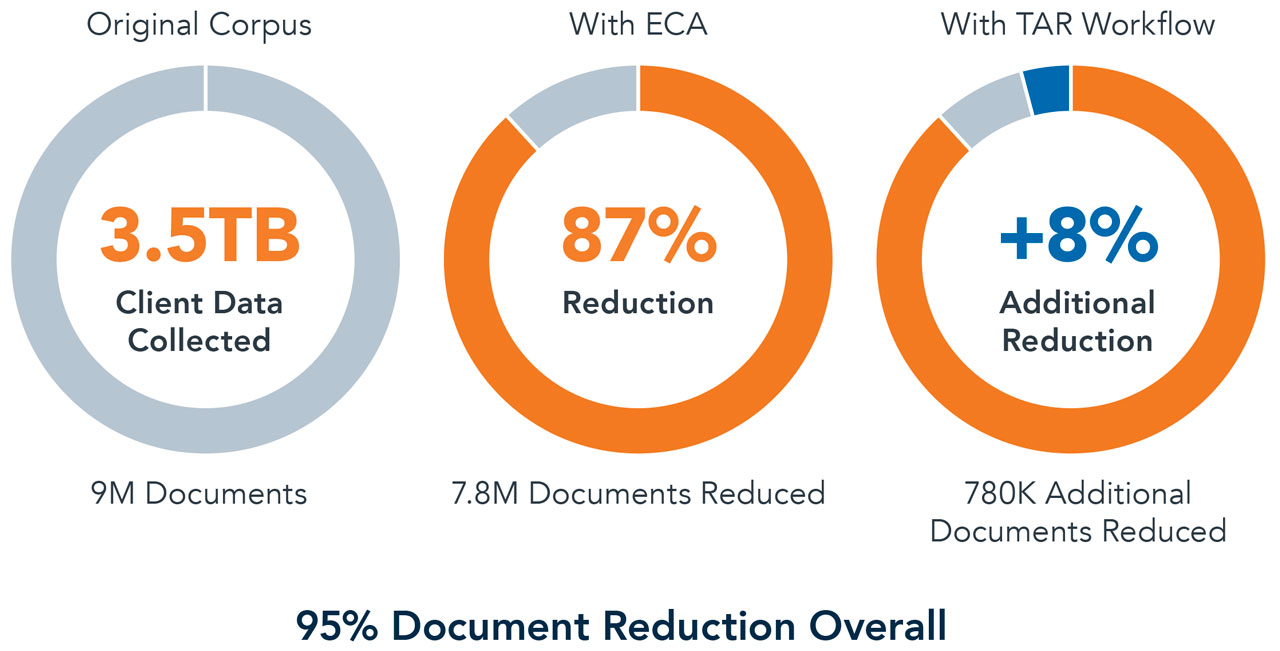What They Needed
Recently, Lighthouse was brought in by the Department of Justice (DOJ) of a large western US state who had to produce data for a high-stakes, multi-million dollar breach of contract matter. The client was dissatisfied with their current eDiscovery panel and was looking for a new provider who could help centralize eDiscovery with document review, use advanced technologies to reduce data, and ensure quality and security.
How We Did It
To kick things off, Lighthouse and the client team met to discuss the key goals and expected outcomes of this particular case. It became very clear that the client wanted to reduce data in a defensible way and so our team of legal and technology experts got to work.
At the start of the matter, our team collected and processed more than 3.5TBs of client source data (i.e. 9M documents) as well as 98K documents that had been produced by opposing counsel and 135K documents that had been produced by 22 various third parties. In addition, we collected approximately two dozen mobile devices as well as advised and assisted outside counsel on a declaration defending the process for collection and production of mobile devices.
Next, we brought in the use of best-in-class technology. We leveraged our search consulting team to apply our early case assessment (ECA) tool to the data after processing, and less than 14% of the original corpus (i.e. 1.2M documents) was promoted from the ECA database. Within the ECA environment, we assisted the client with culling, search term iteration, and helped the client to develop and sample search terms for use during negotiations with opposing counsel. After agreeing upon and validating search terms with opposing counsel, the result set was promoted from ECA for review. Within the review environment, we instituted a technology assisted review (TAR) workflow to reduce the overall review population to 420K documents (a 65% reduction after applying ECA) and prepared defensibility reports for opposing counsel. Finally, we used our thread suppression technology to suppress duplicative emails.











